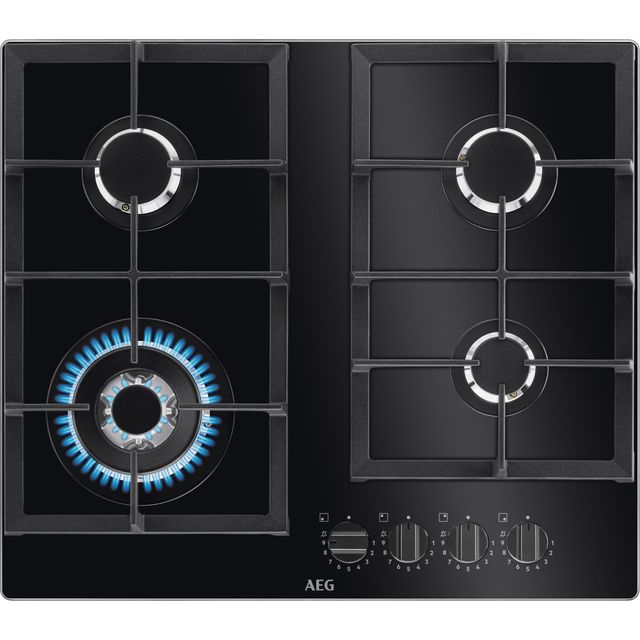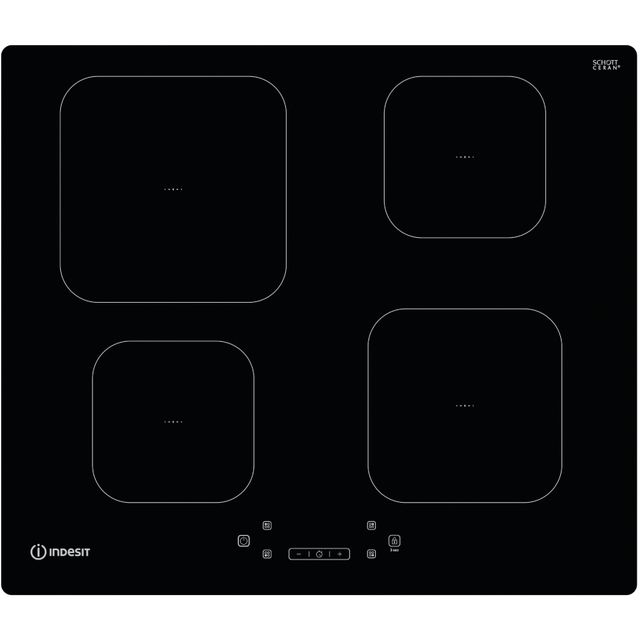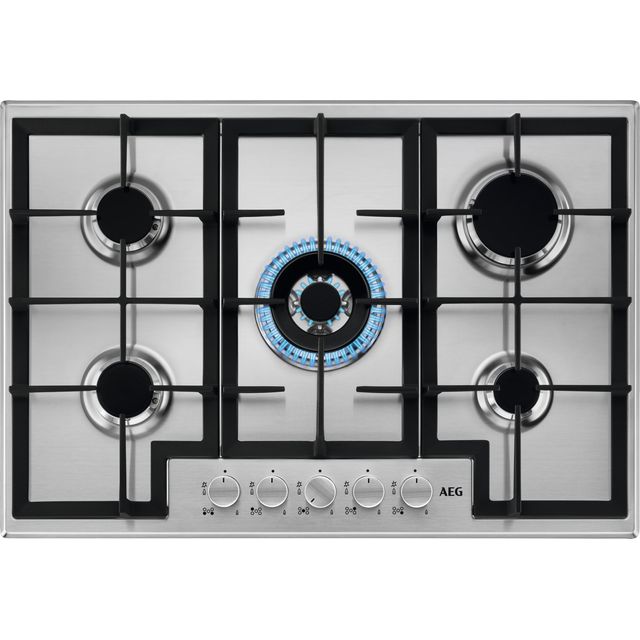Our site uses cookies to give you the best experience. or continue shopping if you're happy.
Accept & closeHobs
Get to Know
Our "Get to know" videos dive deep into product features, providing detailed insights on how each one can benefit your life. These videos go beyond the basics, showing you practical ways these features can improve your daily routines, making tasks easier, more efficient, and even more enjoyable.
AO Favourites

Bosch Series 2 PUG61RAA5B 59cm Induction Hob - Black

Bosch Series 4 PVS611B16E 59cm Induction Extractor Hob - Black - For Ducted/Recirculating Ventilation

Hisense HI8421BSC 80cm Induction Hob - Black

AEG 5000 Series TN64IA04FB 59cm Induction Hob - Black

Bosch Series 4 PIE631BB5E 59cm Induction Hob - Black

AEG HKB64420NB 59cm Gas Hob - Black

Hotpoint PVH92BK/FKIT 83cm Induction Extractor Hob - Black - For Ducted/Recirculating Ventilation

Indesit IS83Q60NE 59cm Induction Hob - Black

AEG 3000 Slim Line HGX75400SM 74cm Gas Hob - Stainless Steel

NEFF N50 T26GKH8N0 58cm Gas Hob - Stainless Steel
Did you know?

Choose induction for speedy boiling
Induction hobs are super-quick to heat up and can boil water in as little as 90 seconds. Of course, the size of your pan and amount of water will make a difference, but you won’t be waiting around for long.

Induction hobs often have super safety features
If you’re keen to clean-up after cooking, you’ll be glad to know induction hobs cool down quickly. They also come with residual heat indicators that let you know when an inactive zone is still hot. Some even have child locks, so you can keep little fingers safe and sound.
Clever tech keeps mess to a minimum
Some induction models have a feature that stops pans boiling over by reducing the heat on the zone before it’s too late. Now you don’t have to worry if the kids distract you for a moment.

Mixed fuel hobs give you the best of both worlds
If you can’t decide between gas and induction, mixed fuel hobs are a great option. They’re energy-efficient with the precise control of an induction model with the additional fire power of a gas hob. Win-win.

Get prepped for your new extractor hob
If you’re looking at an extractor hob, it’s worth noting that this takes up a bit of extra space under your counter. Some models don’t come with a ducting kit to install them, so you may need to pick one up separately.
Check when you need a professional
Most hobs need hardwiring in, but some models do come with plugs. Check your connection before you choose, as a lot of homes don’t have a socket beneath the cabinet, so they’ll need to be installed by an electrician anyway.

Upsize without the faff
Most standard induction models are super thin, so they don’t take up cupboard space underneath. That means if you fancy getting a wider hob, you’ll only need to alter your worktop to fit it in.

Gas on glass gives you style and function
If you love cooking on gas but prefer the look of an electric hob, have a look at the gas-on-glass models. They’re sleek and easy to clean while keeping all the benefits of gas cooking.
Induction hobs are great at saving energy
Induction hobs are up to three times more efficient than gas models. That’s because they directly heat the base of the pan, so there’s no wasted energy.
Gas models can be efficient too
The most efficient gas hobs have a direct flame. They are up to 25% more efficient than a standard gas burner because the heat sits right below the pan, giving the heat less room to escape.
Things to Know
There are some essential product details you'll want to consider before starting the search for your new hob. Our handy videos will help you narrow down the options to make sure you find exactly what you need.
Guides and advice
A helping hand with hobs
Spoilt for choice? Our buying guide will help you choose the perfect hob. Happy shopping.
Make sure you get that perfect fit
We’ve put together some handy tips that’ll get your hob fitted perfectly.
Hassle-free installation
Check our latest hob deals!
Kit out your kitchen with a new hob lovingly served up by our latest deals and promotions.
AO Finance Representative example
Representative
(variable)
Purchase rate
(variable)
Assumed
credit limit
Credit is provided by NewDay Ltd who will determine your APR, credit limit and available offers. AO Retail Limited acts as a credit broker for NewDay Ltd on an exclusive basis and is not a lender.
FAQs
- What is the difference between hob and stove?
A hob is built-in and comes with lots of different cooking features, whereas a stove is freestanding and often comes attached to an oven.
- What are the three types of hob?
There’re gas, induction, or ceramic hobs to choose from. Gas hobs heat up really quickly and give you complete control of your cooking. Induction hobs look sleek and send heat directly to the base of your pan, making them safe, energy-efficient, and easy to clean. Ceramic hobs look just as modern as induction but take a little more time to heat up.
- What is the most common hob?
Gas hobs tend to be the most popular choice. They’re a reliable and long-lasting option, so they suit a lot of households. However, induction hobs are a favourite for new installations because they’re more energy-efficient and easy to use.
- What type of hob is best?
The best hob depends on what you’re after. A gas model gives you total control when you’re cooking - it heats up fast and lets you alter the heat more accurately. An induction hob is the safest and most energy-efficient because it only heats the base of your pans. It’s also super easy to clean and comes with loads of different settings. Ceramic hobs have a smooth surface that’s easy to clean at a lower price point, so it’s a great option if you’re on a budget.
- What type of hob do chefs prefer?
Professional chefs usually choose gas hobs for the level of control it gives them and how quickly they heat up, so they’re great when you’re against the clock. Some chefs are converting to induction because they directly heats the pan, so no energy is wasted. It’s also easier to clean up splashes and splatters from the smooth induction surface.
- Are electric hobs better than gas?
Electric hobs, including induction and ceramic, are safer since there’s no live flame and they have smooth surfaces that make cleaning easier than gas hobs, which have pan supports that can get in the way. However, gas models are quick and more responsive, so if you’re really into cooking, you’ll notice the difference.
- What is an induction hob?
Induction hobs are electric models that directly heat the base of your pans. That makes them safer and more energy-efficient than gas or ceramic hobs. It’s also worth noting that you need special pans for this technology to work.
- How do induction hobs work?
Induction hobs use electromagnets to heat the base of the pan directly, so no heat is wasted. They’ll only start heating up when you pop an induction pan down on top, but you will need special pans for them to work.
- Are induction hobs energy efficient?
Induction hobs are the most energy-efficient choice since no heat is lost. They heat the base of the pan directly, so they can help save a few pennies on your utility bills.
On the hunt for a new hob? We’ll show you everything you need to know before you choose one, from different types to installation.
We have a range of hob types that’ll suit different styles of cooking. Induction hobs are great for speed and precision, using clever electromagnets that only heat the part of the surface you need, making them safe and efficient. If you like traditional cooking, gas hobs will suit you down to the ground with their precise temperature control, while ceramic hobs heat up quicky and are easy to clean.
You’ll also need to think about the size of the hob you need. Measure the space in your kitchen where your hob is going to live to make sure you get the perfect fit. If you’re energy-conscious, an induction hob will be a great choice as they’re known for being more efficient than other models. They’re easy to clean as well, just like ceramic hobs, because they have a flat smooth surface that can be simply wiped down.
When it comes to installing a new hob, we’d always recommend getting one of our specially trained engineers to do the job for you on delivery day.
Once your new hob is up and running, it’s important to keep it properly maintained. The easiest way is to clean it with non-abrasive cleaners and soft cloths, and always follow the manufacturer’s safety instructions.


